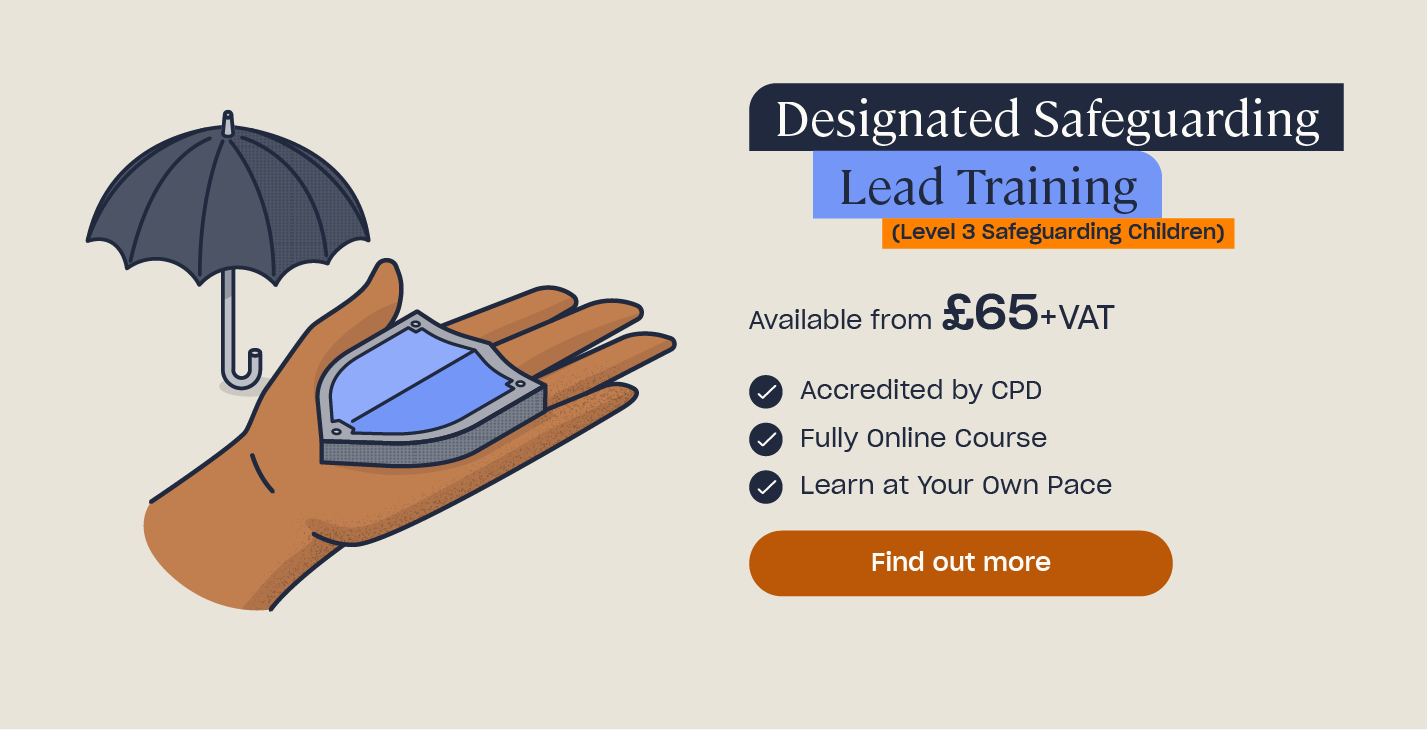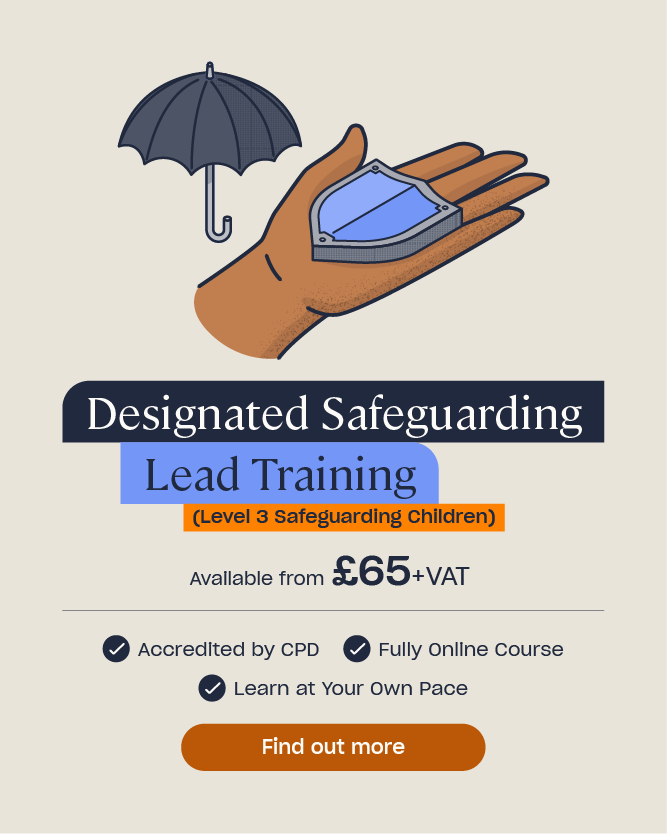What is a Designated Safeguarding Lead?
Safeguarding is vital for everyone who works with children and young people, whether it’s in a school, college, charity, place of worship, healthcare practice, or other type of premises. It requires full commitment from all staff in the organisation – as it’s everyone’s duty to look after children – particularly the designated safeguarding lead.
It’s crucial for organisations who work with children to have a designated safeguarding lead (previously known as a designated safeguarding officer or DSO). They must be well-equipped and prepared for the responsibility that comes with being a designated safeguarding lead (DSL), as they will coordinate and oversee safeguarding procedures, as well as act as a first point of contact for anyone with concerns.
In this article, we will provide an overview of what the DSL’s role involves and how to prepare for it. Understanding this will help you to ensure that children are protected and have a fulfilling, safe experience in your setting.
Need DSL Training?
Browse our Designated Safeguarding Lead training course, sets out in detail all the key responsibilities of the DSL and familiarises you with all the knowledge you need to take actions if necessary. We work hard to ensure it’s as practical as possible for those looking to take on the role of DSL or to refresh their knowledge as required.
What is the Role of a Designated Safeguarding Lead?
The designated safeguarding lead has overarching responsibilities regarding safeguarding in their organisation. They will have an in-depth knowledge of safeguarding guidance (such as Keeping Children Safe in Education and Working Together to Safeguard Children) and related pieces of legislation (e.g. the Children Act 1989) that their workplace must follow.

They will apply this knowledge to help implement and maintain safeguarding procedures and policies, as well as be alert to safeguarding issues on a day-to-day basis. This includes ensuring that staff have received appropriate training, that their own training is up to date, safe recruitment practices are sufficient, and all actions are within the best interest of safeguarding children.
If the DSL identifies any concerns or another member of staff raises them, they will coordinate with the child’s primary caregiver(s) if suitable and the necessary external bodies to pursue a course of action.
What are the Responsibilities of a Designated Safeguarding Lead?
The DSL has a number of important responsibilities to fulfil on an ongoing basis. As the lead, it’s also part of their duty to ensure others in the organisation understand and follow safeguarding procedures. They will also work closely with any other senior individuals to coordinate safeguarding duties, such as the headteacher and Governing Body’s nominated governor.

The responsibilities of a designated safeguarding lead include:
- Being available for all staff to discuss any safeguarding issues or concerns. They should ensure that all staff are aware of the DSL and deputy contact details.
- Ensuring that cases of suspected or actual child protection or safeguarding concerns are referred to the appropriate agencies. The DSL will gather further information and evidence if needed.
- Ensuring that all staff are fully trained in safeguarding and know how to spot and raise concerns. They will also help to maintain an effective staff supervision programme.
- Undergoing regular refresher training themselves to ensure their safeguarding knowledge is as up to date as possible and in line with new guidance.
- Ensuring that adequate reporting and recording systems are in place for safeguarding procedures, and that there are appropriate transferal procedures for records if students move.
- Ensuring that the school’s safeguarding policies and procedures are up to date with the most recent statutory guidance, and that everyone who has safeguarding duties are familiar with any updates.
- Communicating with families on the school’s policies and procedures, as well as any concerns or referrals where appropriate.
- Complying with any Local Safeguarding Children Partnership (LSCP) requirements.
- Ensuring their organisation has sufficient safer recruitment procedures.
- Being aware of any children who may require specific safeguarding needs and have specific vulnerabilities.
This is not an exhaustive list, but it covers the main responsibilities that may be included in a DSL’s job description, and that you’ll be expected to fulfil if you’re looking to become a DSL.
All set for your INSET day?
Our safeguarding INSET pack is here, and it’s yours for free! Packed full of valuable resources to help make your next INSET day run smoothly and successfully. Download your free INSET pack.
Do I Need Training to Become a Designated Safeguarding Lead?
The designated safeguarding lead in an organisation will be someone with the necessary knowledge, experience, and training to fulfil their role. This means that you will need to have some prior experience with safeguarding to advance to a DSL level. Overseeing safeguarding is a crucial responsibility, so being suitably prepared is a necessary step to becoming a DSL.
As the NSPCC states, the designated safeguarding lead must be trained in:
- The law and guidance on safeguarding.
- Types of abuse and the signs and indicators to look for.
- How to build a safe culture so that people are safe and willing to share concerns.
- Barriers to disclosure and recognition of safeguarding issues.
- Safer recruitment.
- Listening to and supporting those who have concerns.
Training must be refreshed regularly in line with any updates or changes to guidance. DSLs are generally recommended to receive accredited, enhanced training each year as required to keep their knowledge up to date. This is especially important as the Department for Education often update their guidance, i.e. Keeping Children Safe in Education and Working Together to Safeguard Children.

Becoming a Designated Safeguarding Lead is an important responsibility, as you have a number of overarching duties surrounding safeguarding children. Your role requires a solid understanding of the law and guidance, so you can apply this to the safeguarding procedures you implement and maintain, as well as the training and ongoing supervision that staff in your organisation receive. Fulfilling your role will ensure that the children you and others are responsible for remain safe from harm.
What to Read Next:
- Regulatory Requirements for Designated Safeguarding Leads in Schools
- Safeguarding Children Legislation: Guidance for Schools
- Creating a Safeguarding Policy – Example Template for Schools
- Designated Safeguarding Lead Quiz
- Designated Safeguarding Lead: Resources & Guidance
- Safeguarding Responsibilities of School Staff
- Safeguarding Scenarios and Answers for Education
- Child Protection Body Map







